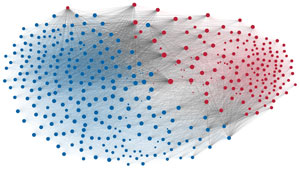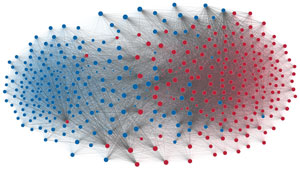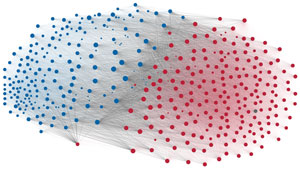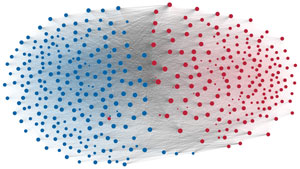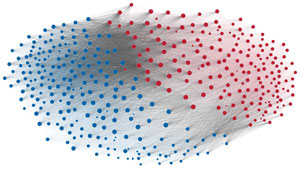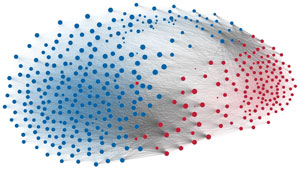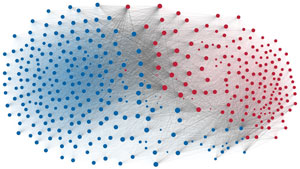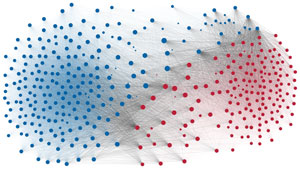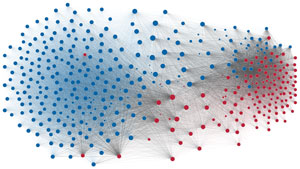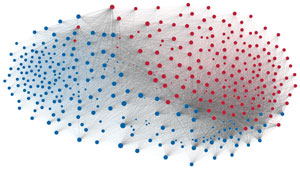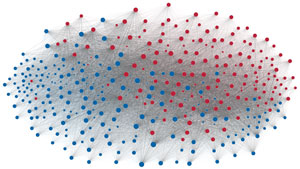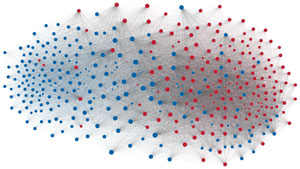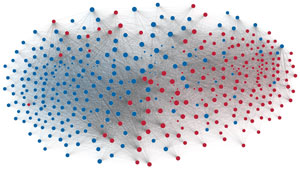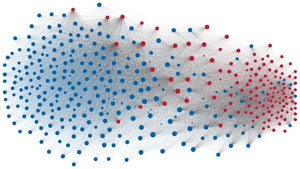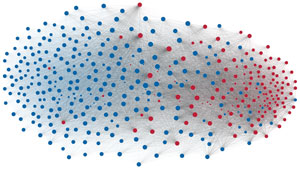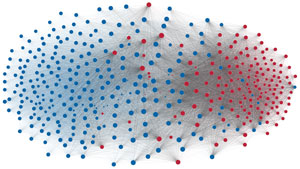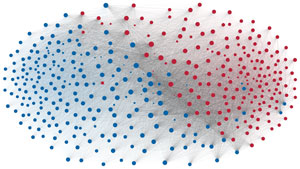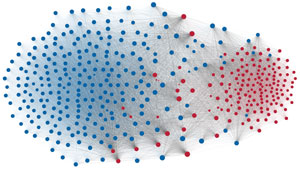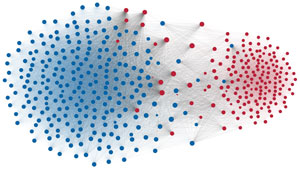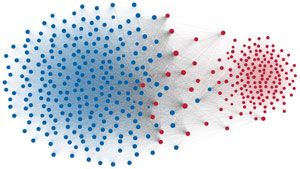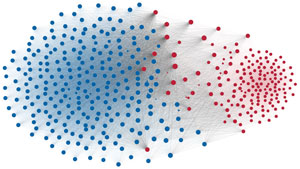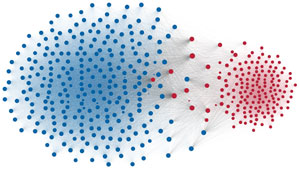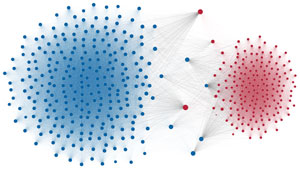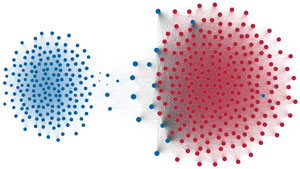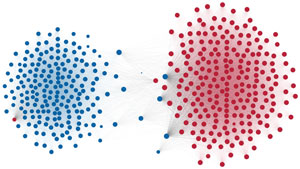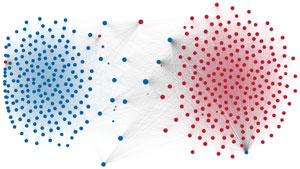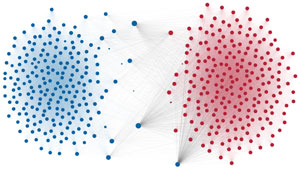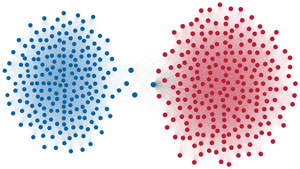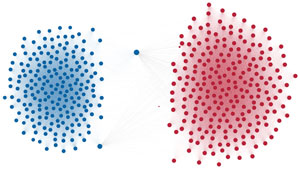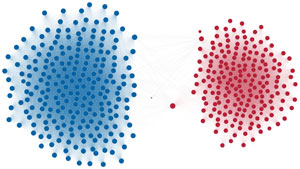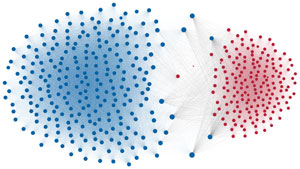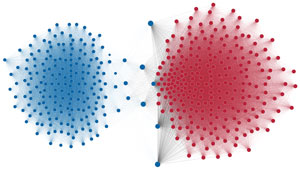
Summary:
Political Polarization in the U.S. Congress has been a topic of much discussion recently. We show the party polarization of the House of Representatives through time, with a focus on which members continue to participate across party lines (such as southern Democrats from Alabama, Mississippi, Texas and Louisiana cooperating with many Republican voters in the late 1990's and 2000's).
Description:
Each member of the U.S. House of Representatives from 1949 - 2012 is drawn as a single node. Republican (R) representatives are in red and Democrat (D) representatives are in blue, party affiliation changes are not reflected. Edges between nodes are drawn if each member agrees with another member more often than the "threshold value" of votes specific to that particular Congress. The threshold value is the number of agreements where any pair exhibiting this number of agreements is equally likely to comprised of two members of the same party (e.g. D-D or R-R), or a cross-party pair (e.g. D-R). (Methodology and mathematical descriptions available in our paper). Each node is made bigger or smaller based on the number of connections it has. Edges are thicker if the pair agrees on more votes. The starting year of each 2-year Congress is written above the network. The network is drawn using a linear-attraction linear-repulsion model with Barnes Hut optimization.
click to explore
detailed networks 1949 -2013:
